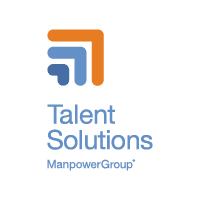The sudden shift in the world of work caused by the COVID-19 pandemic has meant that for many workers there has never been a time for greater flexibility and autonomy in their work lives. As many workers express the desire to see some changes become permanent, here’s how organisations can view and support the empowerment of their workforce, to benefit all.
The ability to choose
There has been no one-size-fits-all for workers when it comes to working from home full time, a hybrid model or remaining in a physical workplace. Organisations should work with HR and with individuals to determine the best balance of work and home responsibilities for team members and organisations alike. Employers will increasingly redesign and revalue the workplace for the best blend of ‘heads down’ remote work along with ‘heads up’ collaboration and creativity. Meanwhile, the continued growth in the gig and freelance economy will continue to redefine what it means to be an employee or worker as well as increase worker choice.
The importance of physical and emotional health
When the COVID crisis began, all focus shifted to keeping people physically safe. But as the months continued on, it became clear that the workforce also needed mental and emotional support, especially with growing isolation. This requires a greater role for HR, with more duty of care and leadership that can empathise and understand the needs of their workforce.
An always-on digital life
The increased adoption of social networking sites and virtual communities means that workers’ digital footprint and daily interactions have expanded – from Slack to Twitter to email and back again. This has enabled an always-on digital presence, often blurring the lines between personal and professional development activities. For organisations, this means there is work to do to help their workforce to adapt, understand their roles and responsibilities, and share ways to help employees switch off and disconnect in order to avoid burnout.
Transparency and equity
Today, workers want more from their employers, including security, sustainability of skills, work-life blend and wellness. They also expect more from the values of their organisation such as acting as global citizens and environmental stewards along with other social goals and metrics. Employers that show they are committed to both their workforce along with their customers and shareholders will be able to attract, retain and support the best talent.
Employers and employees are evolving and moving into the future together, and it takes both groups to communicate, understand and adapt to each other’s needs. Moving forward, organisations need to be prepared for and understand the fundamental shake-up of the old work order – and be ready to take bold, innovative and effective action.
Download our Top 21 Trends for 2021 Infographic for more information on the major forces of demographic shifts, rise of individual choice, growing client sophistication, technological revolution as well as emerging trends shaping the workplace and workforce of the future. Learn more here.


